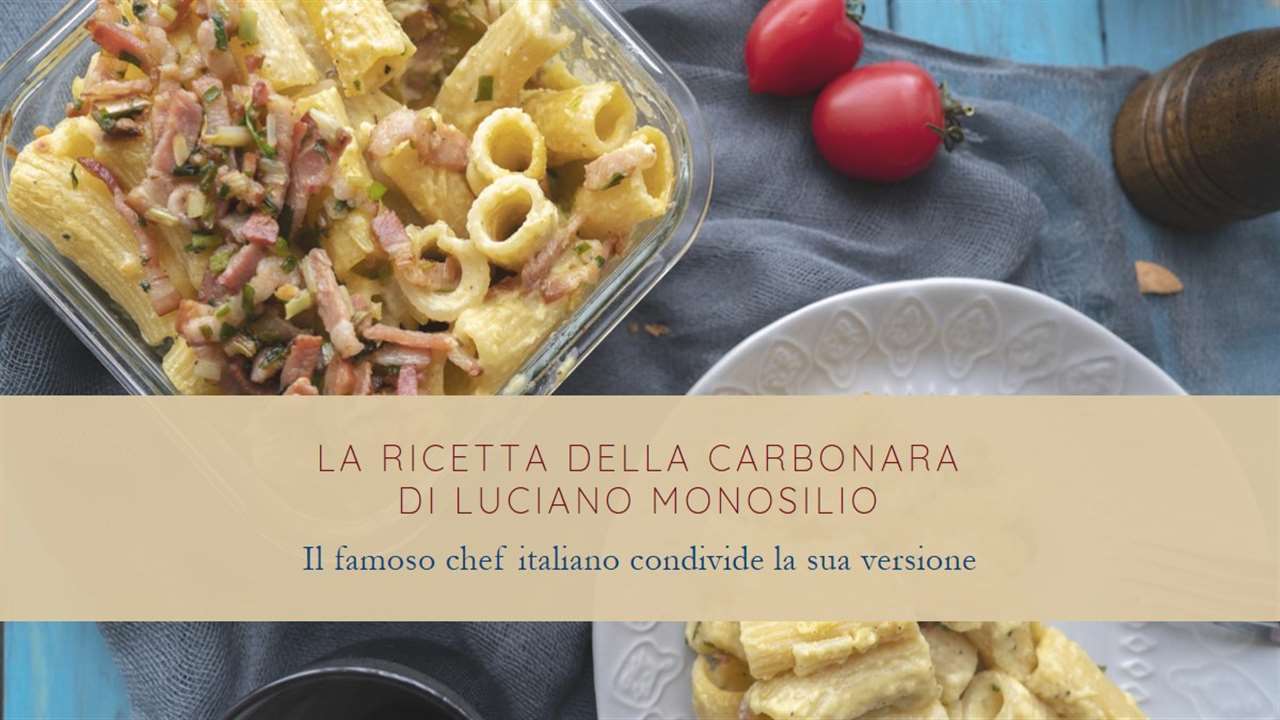If you’re a pasta lover, chances are you’ve heard of Carbonara, the quintessential Italian dish that’s beloved worldwide for its creamy texture and rich flavors. But have you ever wondered what makes a Carbonara truly exceptional? Look no further than Luciano Monosilio’s Carbonara Recipe, the master chef behind one of the most renowned Carbonara recipes in the culinary world. In this article, we’ll delve into the secrets of Luciano Monosilio’s Carbonara, exploring its history, ingredients, cooking techniques, and of course, how you can recreate this masterpiece in your own kitchen.
The Origins of Carbonara
Before we dive into the specifics of Luciano Monosilio’s recipe, let’s take a moment to appreciate the origins of Carbonara. This iconic dish hails from Rome, with its roots tracing back to the mid-20th century. While its exact origins are shrouded in mystery, many believe that Carbonara was created as a hearty meal for Italian charcoal workers (hence the name “Carbonara,” which translates to “charcoal burner’s style”).
Understanding the Ingredients
At the heart of any great Carbonara lies a handful of simple yet essential ingredients. Luciano Monosilio’s recipe stays true to tradition while incorporating his own unique twists. The key players include:
Guanciale
This cured meat, derived from pork jowl, is the star of the show. Its rich, fatty flavor infuses the dish with depth and complexity.
Pecorino Romano
A sharp and salty cheese made from sheep’s milk, Pecorino Romano adds a distinctive tanginess to the sauce.
Eggs
Fresh eggs are crucial for creating the velvety texture that Carbonara is known for. They bind the sauce together and give it a creamy consistency.
Spaghetti
The pasta of choice for Carbonara, spaghetti provides the perfect canvas for the luscious sauce to cling to.
Luciano Monosilio’s Technique
What sets Luciano Monosilio’s Carbonara apart from the rest is his meticulous attention to detail and his mastery of technique. Here’s a step-by-step breakdown of his process:
- Render the Guanciale: Start by gently frying thinly sliced guanciale in a pan until it turns golden and crispy. This process releases its flavorful fat, which forms the base of the sauce.
- Cook the Pasta: While the guanciale is rendering, cook the spaghetti in a pot of salted boiling water until it reaches al dente perfection.
- Whisk the Eggs: In a separate bowl, whisk together whole eggs, Pecorino Romano cheese, and a generous amount of freshly ground black pepper. This creates the creamy sauce that will coat the pasta.
- Combine Everything: Once the spaghetti is cooked, drain it and transfer it directly to the pan with the rendered guanciale. Toss the pasta together with the guanciale, allowing it to absorb the flavorful fat.
- Add the Egg Mixture: Remove the pan from the heat and quickly pour the egg and cheese mixture over the pasta. The residual heat from the spaghetti will cook the eggs gently, creating a silky smooth sauce.
- Serve Immediately: Plate the Carbonara immediately, garnishing it with additional Pecorino Romano and black pepper. Enjoy it piping hot for the ultimate indulgent experience.
Conclusion
In conclusion, Luciano Monosilio’s Carbonara recipe exemplifies the beauty of Italian cuisine: simple yet sophisticated, comforting yet elegant. By honoring tradition while adding his own creative flair, Monosilio has elevated this classic dish to new heights. Whether you’re a seasoned chef or a home cook looking to impress, give his recipe a try and experience the magic of Carbonara for yourself.
For more ideas, recipes, and cooking tips and tricks, please visit us at Danpittman for Treasurer.
FAQs About Luciano Monosilio’s Carbonara Recipe
Q1: Can I substitute pancetta for guanciale in Carbonara?
A1: While guanciale is the traditional choice, pancetta can be used as a substitute if guanciale is not available. However, keep in mind that guanciale has a richer flavor that truly enhances the dish.
Q2: Can I use Parmesan instead of Pecorino Romano?
A2: While Pecorino Romano is the authentic choice for Carbonara, Parmesan can be used as a substitute if necessary. However, be aware that Parmesan has a milder flavor, so you may need to adjust the seasoning accordingly.
Q3: Is it safe to eat raw eggs in Carbonara?
A3: The residual heat from the cooked pasta is typically sufficient to lightly cook the eggs in the sauce, reducing the risk of consuming raw eggs. However, if you have concerns about food safety, you can use pasteurized eggs or briefly heat the sauce on low heat before serving.
Q4: Can I add vegetables to Carbonara?
A4: While purists may argue against it, you can certainly add vegetables such as peas or mushrooms to Carbonara for added flavor and texture. Just be mindful not to overwhelm the dish with too many additional ingredients.
Q5: How do I prevent the eggs from scrambling in Carbonara?
A5: To prevent the eggs from scrambling, it’s crucial to remove the pan from the heat before adding the egg mixture to the pasta. Additionally, be sure to toss the pasta quickly and continuously to evenly coat it with the sauce without allowing the eggs to overcook.

